




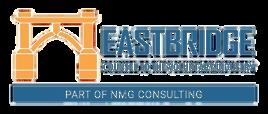
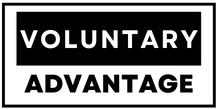

Jennifer Daniel Aflac

Jack Holder EBIS

Rachel McCarter Mercer

Mark Rosenthal PwC


Steve Clabaugh CLU, ChFC
Editors
Heather Garbers | Trevor Garbers
Marketing Director
Marin Daniel
For Media and Marketing Requests Contact:
Heather@voluntary-advantage.com
Trevor@voluntary-advantage.com
Mailing Address
10940 S Parker Rd #257 Parker, Colorado 80134

Seif Saghri BenefitHub


Tim Schnoor Birch Benefits
Sydney Consulting Group A d v i s o r y B o a r d

Hunter Sexton, JD, MHA

Michael Stachowiak

Industry Update: Supplemental Health Claims
The Claimant Experience
A Journey of Wisdom & Protection: The Tale of Long Term Care Insurance
Voices of Voluntary Benefits: Say the Unsaid
How Employers Can Use Discounts to Offer Meaningful “Raises” For Employees

Why Ask Why?

The Purpose of Employee Benefits

When Something Goes Wrong: Part II
As we wrap up another election cycle, I’m always reminded of the excitement and buzz you can feel in the air as we exercise our incredible freedoms. Many have paid the ultimate sacrifice, allowing us to support our individual beliefs, may that be a particular party, a given candidate, a key legislative bill, etc
At the end of the day, it’s about trusting the message you hear and ensuring that the candidate can deliver on a given promise, which is the absolute fabric of what we do every day within our marketplace – deliver on a promise
Our business at its absolute core, is to secure and deliver on that promise when the valued policyholder needs our solution to maintain their current way of life When you break it down, we bring change, hope and financial security to millions each year in the solutions we provide to employers and employees across this great country and abroad. And guess what, we are friends, colleagues and great business partners at the end of the day, even as competitors.

Trevor Garbers
We don’t see carriers pulling other carrier marketing materials from a brokers office because we believe we have a better service – Hopefully, someday the same will go for political signs We don’t stop talking to other brokerages or carrier colleagues just because they work for someone else – hopefully, someday the same will go for those that stopped speaking to a family member or neighbor because they don’t believe in the same party or candidate
Could you imagine if we only had one brokerage, one platform, one carrier, one enrollment firm, etc? First, a great number of us would be looking for new careers and I’m certain the options available would be poor at best as competition and choice are absolute paramount Yes, choice is great And yes, agreeing to disagree is ok Do we have tough discussions today with a carrier representative who didn’t win a case? Absolutely Do we replace a vendor if they are not delivering? Absolutely Is our marketplace perfect? Nope, and it never will be yet, after twenty-years in this marketplace, I’ve found myself countless times with someone whom I’ve had that tough discussion with or didn’t award them a case, breaking bread as we both are searching for new and innovative ways to deliver on that promise and bring both financial and emotional security to their loved ones during some of their darkest hours.
Without a doubt in my body, I’ve never been prouder of our marketplace in delivering on our promises. As you will see in this month, we’ve highlighted the real “why” in what we do each and every day in delivering on that promise.

By Eastbridge Consulting Group
It’s no secret that the Voluntary Benefits industry is bigger than ever: Both sales and inforce premium hit record highs last year, riding the wave of a four-year growth trend Twothirds of employers offer voluntary benefits and about half of employees own at least one voluntary product, according to recent Eastbridge MarketVision™ studies
These strong numbers illustrate the value both employers and employees see in Voluntary Benefits but they also point out a significant opportunity to reach the employers and employees who aren’t yet taking advantage of voluntary coverage It’s worth looking behind the statistics to understand what motivates employers to include voluntary products in their benefits packages and what drives employee participation in these coverages.
Cost-cutting? Replacing employer-funded benefits? Broker recommendations? None of these rank among the top reasons employers say they include voluntary products in their benefits programs.
Employee interest in the coverage is far and away the strongest reason employers list: 82% of the more than 1,000 employers of all sizes Eastbridge surveyed in a recent MarketVision™ The Employer Viewpoint© report say it’s important or very important
Employee interest in the coverage is far and away the strongest reason employers list

Employers say meeting employee demand can help drive improved employee well-being and greater productivity In fact, a third of employers surveyed say that is the most important outcome of offering voluntary benefits Better employee recruitment and retention (23%) and helping employees better understand their benefits (20%) also are high on the list. Employers say voluntary benefits help drive employee recruitment and retention by letting them choose the benefits that best fit their unique situations (36%), offering employees choice (24%), providing a broad selection of coverages (21%) and making coverage available at a lower price than they could otherwise find
Interestingly, most of the employers who don’t offer any voluntary benefits say they’ve never even been approached by a carrier or broker about doing so That could indicate a strong market opportunity especially in light of Eastbridge research that shows employees without a particular coverage express significant interest in buying it on a voluntary basis, especially critical illness, long-term care, cancer, identity theft protection and hospital indemnity/supplemental medical insurance
Recent Eastbridge surveys of more than 2,300 employees show the two most common reasons employees buy voluntary coverage are 1) the reasonable cost and 2) the product meets their needs Employees also mention voluntary products help fill gaps in their primary medical coverage, and convenience of paying premiums through payroll deduction, and the convenience of purchasing at work
Of the half of employees who own at least one voluntary benefit, the most popular products are whole life or universal life (16%); dental and prescription drug (both 13%); accident, vision and term life (all 12%); and accidental death and dismemberment (11%). Identity theft protection is the most commonly owned nontraditional voluntary coverage, closely followed by pet insurance and legal coverage
Eastbridge’s survey shows nearly a third of employees who declined the voluntary benefits their employers offered say they didn’t understand the product or couldn’t get answers to their questions That may indicate an opportunity for carriers, brokers and employers to collaborate on a stronger, more comprehensive benefits communication plan to ensure employees understand their benefits and the value they can provide
It’s also important to note that more than half (56%) of the employees who do not own a voluntary product say they haven’t had the chance to purchase voluntary coverage Based on the interest expressed by employees lacking coverage and the significant positive outcomes employers experience when they offer voluntary benefits this could illustrate a significant opportunity for those who want to build their business and grow along with this expanding market



Eastbridge is the source for research, experience, and advice for companies competing in the voluntary space and for those wishing to enter For over 25 years, they have built the industry’s leading data warehouse and industry-specific consulting practice Today, 20 of the 25 largest voluntary/worksite carriers are both consulting and research clients of Eastbridge

By John Allen
Voluntary employee benefits are a critical component of modern workplace benefits and compensation packages These benefits, offered by employers but funded either entirely or partially by employees, go beyond the traditional offerings of health insurance, retirement plans, and paid leave While they are not mandatory, voluntary benefits play a significant role in both attracting and retaining talent, fostering employee satisfaction, and improving overall well- being. This article explores the key purposes of voluntary employee benefits and their impact on both employees and employers.
One of the primary purposes of voluntary employee benefits is to provide employees with greater flexibility in choosing the benefits that suit their individual needs While traditional benefits are often one-size-fits-all, voluntary benefits allow employees to customize their benefits according to their personal needs and the needs of their family This flexibility is particularly important given the diversity of today’s workforce, where employees may have vastly different needs depending on their age, family situation, and financial goals.
Employees who feel empowered to choose benefits that meet their specific needs report 41% higher job satisfaction than those who don’t, according to a Prudential survey
For instance, younger employees might prioritize benefits like student loan repayment assistance, while older employees may focus on supplemental health coverage or long-term care insurance. By offering a wide range of voluntary benefits such as dental and vision insurance, life insurance, accident coverage, or even pet insurance employers empower employees to tailor their benefits to what matters most to them
Voluntary employee benefits serve a critical need in enhancing employees’ financial security These benefits often fill gaps in traditional health insurance or retirement plans, providing additional layers of protection For example, supplemental life insurance, disability insurance, and critical illness coverage can help employees manage unforeseen financial burdens caused by medical emergencies or accidents These benefits provide peace of mind, ensuring that employees and their families are better protected against life’s uncertainties
Moreover, financial wellness programs, which may be offered as part of a voluntary benefits package, help employees manage debt, save for the future, and build stronger financial habits. Programs like these have a profound impact on reducing financial stress, which in turn boosts productivity and employee engagement.
In today’s competitive job market, voluntary employee benefits have become an essential tool for employers to attract and retain top talent Job seekers are increasingly looking for companies that offer more than just a paycheck They want to work for organizations that prioritize their well-being and offer benefits that align with their values and lifestyle Offering a comprehensive suite of voluntary benefits can make an employer more attractive, especially to younger generations, who tend to prioritize work-life balance and holistic well-being
Retaining talent is another critical purpose of voluntary benefits. Employees who feel valued and supported by their employer are more likely to stay with the organization long-term. Voluntary benefits contribute to a positive employee experience, fostering loyalty and reducing turnover.
Employee well-being encompasses physical, mental, and emotional health, and voluntary benefits are increasingly designed to address all these dimensions
Beyond traditional health insurance, voluntary benefits such as mental health support, stress management programs, and wellness incentives play a vital role in promoting holistic health Wellness programs that include fitness reimbursements, smoking cessation support, or nutrition counseling can encourage healthier lifestyles, leading to a more productive and engaged workforce
Mental health benefits, in particular, have gained prominence in recent years, with many companies recognizing the need to support employees’ psychological well-being. Offering access to counseling services, employee assistance programs (EAPs), or even meditation and mindfulness apps helps employees manage stress, anxiety, and other mental health challenges These benefits not only improve individual well-being but also contribute to a healthier, more resilient organizational culture

While voluntary benefits are primarily funded by employees, they offer cost advantages to employers as well Employers can provide access to group rates and discounts that employees would not be able to obtain individually, thus enhancing the overall value of the benefits without significantly increasing the company’s costs. This allows employers to offer an attractive benefits package without bearing the full financial burden.
Additionally, voluntary benefits help employers manage the rising costs of health care. By offering supplemental health options like accident insurance or critical illness coverage, employers can limit their exposure to large claims, shifting some of the financial responsibility to voluntary plans This can help keep the costs of core health plans more manageable
Voluntary benefits can have a direct impact on employee engagement and productivity When employees feel that their employer cares about their well- being, they are more likely to be motivated and engaged in their work Offering voluntary benefits that address the diverse needs of employees from financial security to mental health helps create a supportive work environment where employees feel valued
Inclusive benefits help foster an environment where all employees feel valued, which is key to creating a positive organizational culture. Companies that take the time to offer benefits tailored to their diverse workforce will build a sense of belonging that strengthens employee loyalty and community.
Voluntary employee benefits serve a multifaceted purpose in today’s workplace. They provide flexibility and customization, enhance financial security, and play a pivotal role in attracting and retaining talent
By supporting employee well-being and engagement, these benefits create a more productive, satisfied workforce For employers, the advantages of offering voluntary benefits go beyond cost-efficiency they help build a positive organizational culture that prioritizes the holistic needs of employees As the workforce continues to evolve, voluntary benefits will remain a key tool for companies seeking to create an environment where employees can thrive

John Allen, President of EOIexecutes and develops strategic marketing initiatives on a national level, specifically focusing on the enhancement of value-added services that EOI provides for its clients. Since joining EOI in 2009, John has played a key role in the area of strategic marketing, building an outstanding implementation team in the Chicago office and tripling sales in the Midwest region.
By Heather & Trevor Garbers

At Voluntary Advantage, we are deeply committed to supplemental health claims To be clear, our focus is on innovating the entire member experience, which naturally centers on the claims process We offer these policies to employees so that, in the event of an unexpected health issue, they receive a benefit to help cover the cost of treatment and remain financially stable We present these plans to clients as a way to support both the physical, mental and financial wellness of employees, filling gaps in coverage and reducing barriers to care In today’s landscape, we are all well aware that out-of-pocket healthcare costs and surprise medical bills can be financially overwhelming, potentially preventing employees from accessing necessary care or forcing them to make healthcare choices based on cost instead of outcomes.
So the claims process is important.
Claim integration is important.
Promoting utilization of these plans to do exactly what they were sold to do, without an undue burden on the member is important.
The cheapest plan or the one that offers the best bundle discount or subsidy is great, until the value to the member is diminished due to a cumbersome claims process or denied claim
We are checking in on the industry to see where we are with the claims process today and Kyleen Engelstad, Director of Claims Strategy, at Voya Financial, and Paul Hummel, Vice President, Voluntary Benefits Practice Lead at UnitedHealthcare Specialty Benefits, were happy to share their insights.
When it comes to the claims process today and members’ preferred method of filing claims, Kyleen shares that “in today's increasingly digital world, and as the workforce continues to adapt to evolving technologies, we are witnessing an ongoing shift toward digital claim submissions. The future is already here, as the majority of claims are now filed digitally rather than on paper. According to Voya’s data from Q3 2024, less than 2% of our supplemental health claims were submitted via paper, whether through email, fax, or mail.”
Claim integration is a hot topic in the industry and we are seeing broad use of the term to describe everything from a “claim notification”, where the member receives a notification via email or mail that they have a potential claim they can file, to “claim autoadjudication”, referring to the carrier automatically filing the claim for the member with the data they have in-house
We are curious what data carriers are using for claim integration today and what impact claim integration is having on the experience for the member and utilization rates. According to Paul, “We are using medical data and we have had a significant impact; however, just because medical data is available to a carrier, does not mean there will be a significant impact. What a carrier does with the data determines how much claim impact is recognized.
Kyleen shares that “The majority of our claim integration data is sourced directly from the employer’s medical carriers for our medical claims integration clients For our product-toproduct integrations, we rely on the information submitted by claimants with their initial claim submission Product-toproduct integrations cover a larger percentage of our block of business currently and drive impact for more, when applicable While our medical claims integrations are also showing positive results, we are continuously exploring ways to enhance this impact.”
Another key consideration when we talk about claim integration is that this strategy typically includes the sharing of external health insurance claims data, which obviously can raise some compliance and data privacy concerns. On this topic, Kyleen states that “we find that most of our clients are open to sharing medical claims data to proactively identify potential claims for their employees enrolled in supplemental health benefits. Historically, clients who have been hesitant to share this data often view these benefits as separate from their core benefit programs, considering them optional addons funded by employees' own paycheck dollars However, as the industry has evolved, there is a growing recognition of the value these benefits bring to the overall employee benefit package, leading to increased willingness to integrate and share medical claims data when managed to safeguard that information”
According to Voya’s data from Q3 2024, less than 2% of our supplemental health claims were submitted via paper, whether through email, fax, or mail - Kyleen Engelstad
To give credit where credit is due, our industry has come a long way in the claim process – but it still has room for improvement for a seamless member experience Kyleen shares some recommendations for how to increase claim utilization, “At Voya we are focused on deploying a multi-faceted approach as onesize does not fit all For instance, claims integration is a great approach, but it doesn’t always apply to all enrolled employees, and they still may not understand their benefits even when it does apply and work for them Engaging employees throughout the year with communication and education about what they have enrolled in is critical.
3
What data is being used to identify potential claims, are the proper agreements in place to share/receive that data?
What type of integration is it? Claim Notification? Auto-Submission? Auto-Adjudication? What is the process when additional information is needed to complete processing of the claim?
Who initiates the claim? This can make a significant difference on both the impact of the integration strategy and the experience for the member
What is the projected impact of the data? For instance, some carriers will integrate claims with their Life and Disability lines – but the overall impact is relatively minor as identifying a potential supplemental health claim is limited to someone who a) has the life or disability line of coverage and b) files a life or disability claim for a significant event This can result in missing the more common minor events a supplemental health plan would pay for
What efficiency in the claim process does this create for the member? Are they just notified that they have a potential supplemental health claim they can file? Do they then complete the claims process from start to finish for the supp health product, or is the claim started with information the carrier has already received, saving the member time and effort in having to enter data they’ve already shared? 5 If claim notification is the type of integration being offered, what does that notification look like for the member? Is the communication clear for the employee to understand? After reading the claim notification, is it clear that there are additional steps that they need to complete to finish filing their claim?
6. What does the claim process look like for someone without claim integration available? If a member is not on the group medical plan that is sharing claim data, what is the process for them to submit a claim? 7.
Enrollment season can be overwhelming for employees, so there are likely to be better outcomes when education and reminders are sprinkled in throughout the year in bite size nuggets This is evident as our research has found that about two-thirds of employees (65%) are open to receiving information about their benefits from their employer outside of open enrollment to help them better understand their benefits.”
She adds, “in addition, our statistics from a journey campaign conducted with 22 supplemental health clients in 2024 indicates that after just two of the quarterly e-mails, we saw around 746 claims filed, the majority of which were core benefit claims (nonwellness), totaling $766k in claim payments All of this to say, I believe that increasing claims utilization will always involve multiple tools that we keep evolving for our customers, but it will always be very important that employees understand their benefits to fully appreciate their value and peace of mind they provide.”
What is the definition of a covered event?
For instance, with Critical Illness insurance –the definition of Cancer can vary based on the type and stage of cancer. What is the minimum number of days required for a Coma diagnosis to pay out?
What are the plan exclusions and limitations? Are hospitalizations due to mental conditions and substance abuse excluded? Are there waiting periods for any plan benefits?
What does the claims process look like for the member – online, on paper, and through claim integration?
What is required of the member to substantiate the claim? Attending Physician Statements are often difficult to obtain. What is required for Wellness claims? What happens when a claim requires additional information? How is the employee notified? Is the experience entirely paperless? Many people do not have the resources to print/sign/scan paper documents.

We asked Kyleen to leave us with some predictions for what the future holds for Voluntary Benefit claims, and she states that “the future of voluntary benefit claims will likely involve a collaborative effort within the industry to ensure employees who enroll in these valuable benefits receive the support they need. It will remain essential to find the right balance between keeping benefits affordable, paying meaningful claims to employees, and managing broker commissions Additionally, we will need to reassess the role of implementation credits and tech credits, as their ability to be paid may decrease if carriers are consistently meeting the expected claims payouts to employees”
UHC, Voya and Nayya are some of the stakeholders driving innovation in the industry with a focus on enhancing the claim process for members. To keep up with our evolving customer, we can all push the industry to make this a priority by driving market awareness of the different types of claim integration and their impact. Education is key, and the claim process and resources to drive utilization should also be a key point of discussion when educating clients on options available in the market.
Kyleen Engelstad, Director of Claims Strategy, Voya Financial - Kyleen has been in the insurance industry for more than 20 years The majority of her experience has been heavily focused in voluntary benefits She is currently the Director of Claims Strategy at Voya Financial, joining the Voya team in September 2022

Paul Hummel, Vice President, Voluntary Benefits Practice Lead, UHC - Paul leads United Healthcare’s Voluntary Benefit Practice where he is accountable for the growth of the supplemental health practice Prior to UHC, Paul spent 20 years at Trion/MMA, a consultant outside of Philadelphia, PA During the last 10 years of his tenure at Trion, Paul led the Voluntary Benefit Practice where he grew the practice into a nationally recognized program
Nayya Claims empowers employees with proactive, timely notifications, helping them take advantage of their benefits with ease. By streamlining key steps, Nayya Claims removes friction, making it easier for employees to file claims and maximize their benefits.
Upon a medical event that may be eligible for a claim, employees receive personalized alerts guiding them through the next steps with clear, actionable instructions By simplifying claims with digital access, pre-filled forms, and real-time tracking, Nayya ensures employees maximize their benefits with minimal hassle
When employees use Nayya Claims, the experience is intuitive and supportive from start to finish. Employees are notified about eligible claim opportunities and guided through the process with clear, actionable instructions. This digital-first approach means that employees don’t have to worry about manually gathering documents or navigating a complex filing process.
Transparency is another cornerstone of the Nayya Claims experience. Employees can track their claims, receive timely updates, and stay informed on their claim's status. This transparency not only speeds up the process but also boosts employee confidence in their benefits. Nayya Claims provides easy access to helpful resources and FAQs, so employees feel supported and informed, no matter where they are in the process By delivering such a frictionless claims experience, Nayya makes it easier for employees to understand and trust their benefits, resulting in higher engagement and satisfaction.
Here’s what clients have observed since implementing Nayya:
Increased Claim Completion Rates: With timely, data-driven notifications and a simplified filing process, employees are far more likely to complete claims The reduction of filing barriers has made a tangible difference in helping employees take advantage of their benefits
Higher Employee Satisfaction and Confidence: Employees consistently express greater satisfaction and confidence when using Nayya Claims The proactive support they receive through Nayya whether via alerts, digital tracking, or automated reminders ensures they feel guided and valued This boost in confidence fosters a more engaged and loyal workforce
Greater Value for Employers and Carriers: For employers, Nayya Claims drives a higher return on investment in benefits, as employees actively engage with and use their plans. Carriers benefit from increased plan utilization, differentiating their offerings and reinforcing the value of supplemental benefits in the market.
A Competitive Advantage Through Data-Powered Efficiency: Integrating seamlessly with carrier systems, Nayya Claims enhances claim automation and addresses regulatory needs, providing critical insights that benefit employers, carriers, and brokers alike. By proactively delivering claim insights, Nayya adds value for employers, carriers, and brokers alike. T h i n k D i f f e r e n t l y
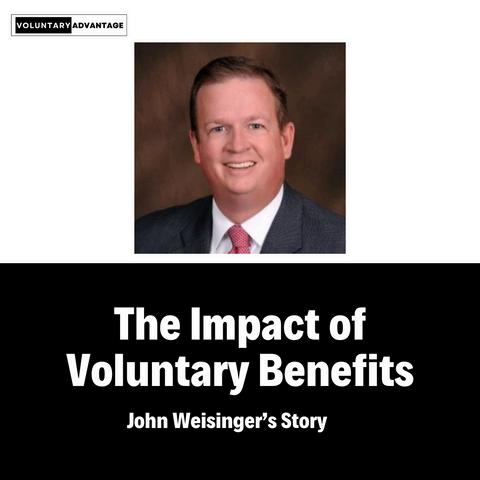
John Weisinger is a well-known advocate of the Voluntary Benefits industry and recently his role changed from that of the trusted advisor, to that of the claimant. He shared his experience with us to spread the message on how we as an industry can do better.
Scot Cheben has been a caregiver multiple times in his life and shares his experience and lessons learned.
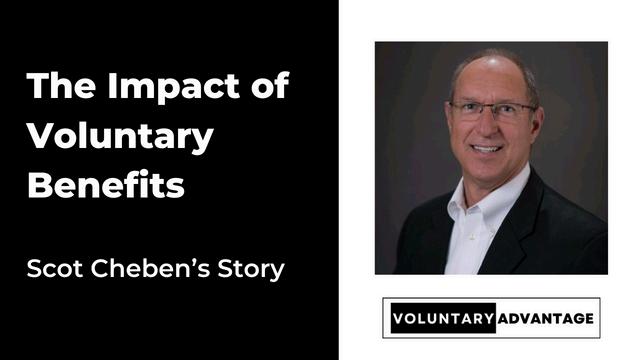
By Andy Wayt

Many of us in the voluntary benefit space do not often realize the impact that we can have on those we work with Between the spreadsheets and plan changes, it is easy to lose sight of the difference that the products we offer can make on someone’s life
As someone with a focus on long-term care planning, I regularly get to see the impact that the products have I recently had a client come full circle and with the Voluntary Benefits Voice’s November emphasis on this topic, I would like to share that story with you.
Marcus’ story is like many clients you have worked with. The key difference for Marcus, as well as for your clients, is whether YOU created that moment where they understood what was at stake for them.
In the bustling cityscape of New York, Marcus was known for his dedication and hard work In his fifties, while many of his colleagues dismissed the need for long-term care insurance, Marcus decided to purchase a voluntary LTC policy through his employer During the enrollment, he scheduled a 1:1 with me to discuss the limits and what amount of coverage would be appropriate for him We had a phenomenal, guaranteed issue (GI) hybrid plan with above average limits During our discussion it came out that with his health history this LTC policy would be the only policy for which he could qualify.
Not used to hearing ‘no’, Marcus was shocked. ‘What do you mean I can’t buy this elsewhere?!’
Only 3% to 4% of Americans 50 and older pay for a long-term care policy, according to LIMRA. That stands in stark contrast to federal estimates that 70% of people 65 and older will need critical services before they die.
Nearly half of individuals who apply for traditional long-term care insurance after age 70 have their applications declined by an insurer according to Jesse Slome, Director of the American Association for LongTerm Care Insurance
Marcus was part of the 30% who have significant health issues that prevent him from being able to purchase long-term care insurance on their own The reasons vary, but we see this is true with about 30% of all employees in the group space
Still doubting my expertise, and never one to argue with a client, I suggested that he apply for the maximum amount of coverage available, and if he was declined for the amount over the GI limit, we could settle with the GI offer This was the moment I needed Marcus to understand the magnitude of the GI offer he had.
As you and I would expect, he was declined coverage for the amount exceeding the GI offer. People expect to be able to get what they want when they want it, even if it costs more money. But in some cases, money cannot buy the benefits needed. He proceeded with the GI offer he originally had access to
Years flew by, and Marcus continued to climb the corporate ladder He experienced great financial success and upon reaching the age of sixty-five, he finally decided to retire With his newfound freedom, Marcus and his wife, Clara, began the retired life of which they had long dreamed They traveled extensively, visiting ancient ruins in Greece, exploring the vast savannahs of Africa, and spoiling their grandchildren to a level that would make Veruca in Willy Wonka blush
Their retirement years were a tapestry of vibrant experiences and cherished memories. They lived every moment to the fullest, their hearts and home filled with photographs and memories of a well-led life.
I stayed in touch with Marcus over the years and noticed as he entered his seventies, the inevitable toll of time began to show His health gradually declined, and I eventually got ‘The Call’
Marcus experienced an event which I had described to him countless times whenever he complained about paying his premium Marcus slipped on a rug and broke his pelvis, making him unable to transfer, toilet and bathe “Three of the six ADL’s” he quipped in the most New York accent you have ever heard as he called me from the hospital
Never one to mince words, Marcus said it was time to ‘reverse the flow’ and ‘get my stinking money back’ after paying premiums for over twenty years.
Upon approval of his claim, he received checks for $6,000 monthly which covered over 90% of his care costs
Thanks to the foresight he had shown decades earlier and our dogged insistence that he would someday be grateful for the planning we had done, Marcus' long-term care insurance stepped in
This policy, once perceived as a mere footnote in his financial planning, became a lifeline It covered the substantial costs of his care, allowing Marcus to receive the services he needed without financial worry Clara and their children never had to worry about who would be his caregiver. Clara did not have to pinch pennies to ensure the monthly deposits went far enough to pay the bills.
This policy, once perceived as a mere footnote in his financial planning, became a lifeline
Marcus and Clara have now become one of my biggest advocates and referral sources But, as you can imagine, the discussions go very differently for others in their peer group For most of their peers, our discussions are brief because unfortunately it is too late for them to plan Their assets will be spent to provide care; taxes will need to be paid; and their financial legacy will be diminished
These referrals often deeply regret not planning to the point of anger. They lived with the hope that it would not happen to them and instead they would die peacefully in their sleep. However, once they realize they are going to need care, and can’t qualify for insurance, regret and anger manifest. ‘Well, I’ll just give it to my kids’ is a common response, but we all know that is not possible with the five-year lookback on gifts for Medicaid planning
Overwhelmingly, most of the world continues to decline to plan for long-term care Yet, as voluntary benefit professionals we can change that Long-term care insurance as a voluntary benefit is still in its infancy compared to other offered benefits, yet I would argue that it will be the second most used voluntary benefit as employees carry it with them

For Marcus and Clara, long-term care planning was life stabilizing for them Clara could remain at home, knowing Marcus was well cared for and their financial stability was untouched The insurance preserved their quality of life, enabling them to continue enjoying their retirement without the fear of medical expenses consuming their hard-earned savings
Do not sleep on adding long-term care offerings to your practice. You could be the only person that opens the door to an employee securing coverage with a lifetime impact.
Do not sleep on adding long term care offerings to your practice. You could be the only person that opens the door to an employee securing coverage with a lifetime impact.
Andy Wayt, Long-Term Care Specialist, IFC National MarketingAndy is a long-term care specialist who works in partnership with different firms all over the US His unique ability to meet clients where they are in a clear and transparent manner has helped thousands of business partners and even more individuals. He would love to help you integrate long term care and caregiving solutions into your benefit strategies. Please find and connect with him on LinkedIn at https://www.linkedin.com/in/andywayt.


VoluntaryAdvantagehaspartneredwithNABIPtoupdatetheirVoluntary/WorksiteCertificationand itisliveandavailabletoyou24/7virtually.
ThecostoftheVoluntary/WorksiteCertificationcourseis$304.70forNABIPmembersand$401.50fornonmembers,whichincludesonlineinstructioninthreeone-hourwebinarmodules,afinalexamand continuingeducationcredits.Uponcompletion,youwillreceiveacertificateofcompletionas voluntary/worksitecertified.
CourseHighlights:
Mastertheproductwithinnovativesolutions
Understandcontractdifferences
Reviewimplementationandadministration
Obtaincrucialcomplianceinsights


By Heather & Trevor Garbers
Sometimes, creating real change requires us to voice the things we usually keep to ourselves There are countless frustrations and challenges we face but hesitate to speak up about, often because we believe, "this is how it’s always been done," or feel, "there’s nothing that I can do to change it" Yet, it’s often these unsaid truths and overlooked issues that hold the most potential for growth and innovation
In this month's edition of “Voices of Voluntary Benefits”, we encouraged industry leaders to break that silence We invited them to "say the unsaid" to share their honest thoughts and concerns they believe the industry needs to address These insights reveal what matters most to those shaping the future of voluntary benefits
“I would like the VB industry to think about how Voluntary Benefits can help address one of the biggest problems in our country The problem being healthcare literacy and the challenges that most Americans face when they try to navigate the healthcare system and identify affordable high-quality care Voluntary Benefits are so much more than a product set that is funded by employee dollars.
They are a strategy that can help fuel personalized new hire onboarding and enhanced open enrollment support and communication of the entire benefits package, while helping to cover out-of-pocket medical expenses for employees and their families People need more education and navigation, and VB can play a significant role”
Nick Bellanca, Vice President, Marsh McLennan Agency

“The Voluntary Benefits industry should stop focusing so much on price as the main differentiator.
ThemostimportantthingaboutVB/WorksiteBenefitsisNOTthattheyarelowercost this year than they were last year. There is significant design flexibility in these productsthatcanbemanipulatedtoachievealowerpricepoint,thatwillthenhavea significantimpactonafamilyattimeofclaim.Often,afewdollarsmoreperpaycheck isabettersolutionfortheemployeeandtheirfamily.IftheRFPisdesignedasa“race tozero”thecarrierswillquoteproductswithavalueincreasinglyapproachingzero.
Yes,let’seliminatewastefulpremium-likeAD&DinAccidentandoverlyrichWellness benefits – but let’s also eliminate “gotchas” like, needing to have “the right kind of heart attack” in Critical Illness or any kind of pre-x/pregnancy limitation in Hospital Indemnity.IfanemployeeisenrolledinanH.S.A.medicalplan,theyneedmuchmore than$35foraPhysicalTherapybenefit,$65foranX-raybenefit,and$125foranUrgent Carebenefit–thesearegoodbenefitdesignareasforpremiuminvestments.
MostRFPsandcarrierquotesaredesignedtomatchcurrentplandesignsandlower price–thisassumesthecurrentplandesignisoptimal–oftenitisnot
Employees only engage with these benefits at the worst timesintheirlives–let’snotsaveafewpenniesperpaycheck inpremiumandgiveupthousandsofdollarsinclaimswhen itisneededmost
It is a terrible waste of money to overpay for Voluntary Benefits,butanequallyterriblewastetounderpayforthem.
Josh
Roland, CLMS, GBDS, VBS, Ancillary Consultant MarketLeader,CentroBenefitsResearch

By Seif Saghri

In today’s economic climate, businesses are constantly balancing the need to retain talent (through competitive salaries) with the financial constraints of delivering ever-increasing shareholder returns. When traditional pay raises are not feasible, offering employees access to alternative benefits, like exclusive perks and discounts, can create substantial and similar financial benefits by enhancing their daily purchasing power and extending their take-home income. Through discount and voluntary benefit platforms, companies can provide employees with real savings that feel just as rewarding and in some cases, even more impactful than a raise.

The impact on employee wallets and purchasing power over the past few years has been dramatic with the cost of entertainment and essentials skyrocketing and becoming unaffordable for many Americans. Some key facts:
The cost of going to the grocery store has been putting a bigger dent in employees wallets during the past 4 years as food prices have risen by a whopping 25.8%.
The average cost for a concert ticket has risen by 34.3% over the past five years, increasing 23.33% in 2023 alone.
The average cost of full coverage car insurance has soared to $2,543 in 2024, an increase of 26 percent in the past year alone with Americans spending spend 341% of their annual income on car insurance
The cost of taking a family of four out to the movies with popcorn has risen to nearly $100 – with the average movie ticket cost being $12 in 2024 (some cities are seeing movie screenings priced as high as $28); this represents a 21% increase in the last three years
The cost of going to amusement parks has risen by more than 3x the rate of inflation; to the larger amusement parks the average family of 4 can expect to spend as much as $7,093 in 2025 on a baseline vacation.
Discount and perks programs offered through platforms like BenefitHub put cash back into employees' pockets. In fact, many employees using BenefitHub report saving over $2,000 annually a financial boost that can function as a meaningful "raise" without increasing payroll expenses
These savings are not just limited to niche items; they span everyday essentials and big-ticket purchases alike By offering discounts in key spending areas, companies can support employees' financial well-being, making it easier for them to manage their budgets and improve their quality of life
Here are just a few examples of how employees can benefit from using BenefitHub’s platform:
Further Education: Up to 30% off tuition or course fees, helping employees invest in their professional development.
Warehouse Club Memberships: 60% off Sam’s Club memberships, saving employees on groceries and bulk essentials.
Auto Insurance Savings: Up to $600 off annual car insurance premiums, reducing a significant household expense
Hotel Stays: Discounts of up to 50% off hotels, making vacations and work travel more affordable
Appliances and Electronics: 10% off appliances and 2%-10% off Apple products, easing the burden of purchasing new technology
New Car Purchases: Savings of up to $2,000 off new vehicles, a substantial discount on a large purchase
Fitness Equipment: 15% off Life Fitness gym equipment, encouraging healthy lifestyles
Broader Savings Across Everyday Spending Categories
Discount platforms offer hundreds of additional savings opportunities across dozens of additional categories, such as:
Entertainment: Reduced prices on tickets for sporting events, movie tickets, concerts, and theme parks to take the family out for a day of fun.
Dining: Discounts at popular restaurants and delivery services, making eating out more affordable and removing the sticker price
Apparel and Retail: Exclusive savings on clothing and accessories from major brands and for everyday essentials
Pet Care: Special offers on pet supplies and services, helping employees care for their furry companions
To ensure employees fully appreciate and take advantage of these programs, it’s crucial for companies to communicate the potential savings effectively. Strategies include:
Highlighting Annual Savings: Show how employees can save thousands of dollars annually through specific examples
Providing User Testimonials: Share stories of employees who have benefited from the discounts, reinforcing the program's value
Easy Access and Onboarding: Ensure the discount platform is easy to access and offer training or support to help employees make the most of it
Regular Updates: Keep employees engaged by sharing new discounts and seasonal offers available on the platform
Partnering with employee perks and discount platforms is a creative, cost-effective way for employers to provide meaningful financial benefits to employees. With discounts across education, travel, retail, insurance, and more, employees can easily save over $2,000 per year delivering the financial impact of a raise without increasing salaries. For businesses looking to attract, retain, and engage talent in a sustainable way, these programs are a powerful tool that delivers value for both employees and employers alike
By focusing on the areas where employees spend the most and communicating the program’s benefits clearly, companies can foster a positive, engaged workforce that feels truly supported

Seif Saghri, Founder & Vice Chairman, BenefitHubBenefitHub is a lifestyle benefits company offering the world’s largest selection of employee and member discounts, voluntary benefits and rewards. There are currently over 20,000 clients in 20 countries that use BenefitHub to delight and engage their 20 million+ employees and members.
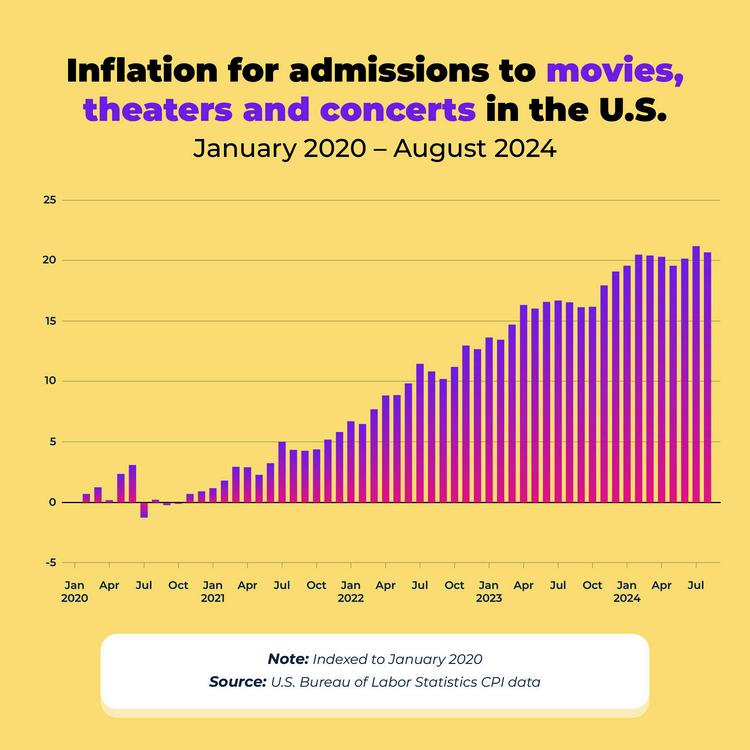

By Steve Clabaugh, CLU, ChFC
Relational leaders demonstrate that they care for their team members as much as the organization. They create, build and lead high-performance teams that consistently achieve excellence.
It is a reality that all organizations eventually face situations where something goes wrong The causes may be external, internal, intentional or accidental but the bottom line is – things will happen that disrupt even the best work teams Fortunately, relational leaders have a 3-step process for responding to set-backs or failures
Step 1: Break it Down to Rightly Size the Problem
Step 2: Determine What You Can and Can’t Control
Step 3: Develop a New Plan to Move Forward
Regardless of the type, size or complexity of the challenge or failure, this three-step process has worked historically and it is still effective today
We concluded last month’s article by introducing the enormous challenges faced by Sir Winston Churchill during the early days of World War II In 1939, it looked to all the world, like Germany was likely to defeat and take control of all of Western Europe (including Great Britain) Churchill held a significant leadership position as First Lord of the Admiralty (head of the royal Navy) but he wasn’t yet Prime Minister. He recognized the extreme danger facing his country and the world. That danger seemed overwhelming and the results almost certain.
As one of the greatest relational leaders in history, Churchill followed exactly the 3-step process for dealing with an overwhelming challenge and likely failure He started by honestly breaking down the situation and sizing the challenges The results of his findings must have been terrifying, but they gave him a real understanding of their situation and, from that, he could and did eventually develop the plan that literally saved the free world
Here are some of the results he determined from his analysis

His boss, Prime Minister Neville Chamberlain, had the wrong approach to dealing with Hitler and Germany. Churchill believed they needed to stand up to him and prepare for war. Chamberlain was committed to appeasement in the hopes that Great Britain would be left alone.
1. Chamberlain suddenly resigned and Churchill was chosen as Prime Minister in May 1940, right at the same time as the German invasion of the Netherlands, Belgium and France began 2.
More than 300,000 British and French soldiers were trapped in the French coastal city of Dunkirk 3
Great Britain didn’t have the industrial capacity to manufacture the needed ships, planes, tanks and supplies needed to conduct a war 4 Great Britain didn’t have the financial resources to purchase the materials they needed
6.
The morale of the public was at an all-time low, along with their confidence in the government to save their country.
7.
The ability to obtain real news about the conditions and results of the war was nonexistent, so decisions were being made without the benefit of accurate information.
And these are just some of the highlights of what he discovered And yet, as bad as the results were, they were essential to the development of their, ultimately successful, war plan
To improve is to change; to be perfect is to change often. -Winston Churchill
Churchill’s next move was to determine what they could and could not control in terms of the critical issues of the war.
Until he was chosen as Prime Minister, there was nothing he could do about the government’s approach of appeasement
As Lord of the Admiralty, however, he could prepare the Navy for war 2
3
As a nationally recognized leader he could speak out forcefully in speeches about the dangers of Nazi Germany
As the likely successor to Chamberlain, he could develop plans to get the troops out of Dunkirk 4
6.
He could create a strategy to enlist the economic, manufacturing and military support of the United States and other countries
5 He could find ways to give the public encouragement and hope of eventual victory and peace.
He could solicit ideas about how to receive, track, act on and communicate vital information about the war effort.
By breaking down and rightly sizing the challenges, then understanding what he could and could not control, Churchill was ready to move quickly and decisively When Prime Minister Chamberlain suddenly resigned in May 1940, Churchill was chosen to replace him He implemented his well thought out plan that, though it did not always look like it would be successful, eventually ended in a dramatic victory for the allies
His first order of business was to save the troops who were trapped in Dunkirk Operation Dynamo rescued 338,000 British and French soldiers between May 26 – June 4, 1940
In December 1940 he wrote a 15-page letter to President Franklin Roosevelt outlining the dire straits Britain was facing both militarily and financially. The resulting dialogue between the two resulted in the Lend-Lease program passed by Congress in March 1941.
This not only gave Britain the supplies they needed but ramped up the United States manufacturing capacity which was greatly needed when we entered the war in December 1941
Starting in May 1940 and continuing throughout the war he gave powerful and inspiring speeches that gave hope to the British, Americans and others
He established multiple organizations to provide accurate statistical information throughout the war. These included the Prime Minister’s Statistical Section and the Central Statistical Office. As a result, he and the British leadership had access to a wide range of vital information on virtually every aspect of the war.
I never worry about action, but only about inaction.
- Winston Churchill

There is much more that could be said about Sir Winston Churchill’s remarkable relational leadership skills You may have guessed by now that he is one of my personal heroes But my point in sharing these examples is not to teach a history lesson but to give you encouragement and hope that, regardless of the challenges or failures you might be facingrelational leadership works. The same can be said for your employer clients who could benefit from understanding and applying the time-tested principles of relational leadership in their business.
Those who read our articles each month or who have participated in a Relational Leadership Experience program will know that I believe relational leadership applies in all types of organizations and in the community itself As always, if you have questions or want to talk more about how relational leadership can benefit your organization or that of your clients, please feel free to contact me

Steve ChFCstarted his career in insurance as a Field Agent, moving on to Sales Manager, General Manager, Regional Manager, Vice President, Senior Vice President, and President/CEO A long time student of professional leadership, Steve created the Relational Leadership program that has been used to train home office, field sales associates, mid-level managers, and senior vice presidents

The Voluntary Benefits Industry is enjoying unprecedented growth. Your products help employers attract and keep the right employees
But Did You Know? The reason over 90% of the employees (especially top performers) leave has to do with issues related to culture!
Relational Leadership Experience (RLE) can give your clients the tools they need to build or enhance their positive culture.
Find out how RLE can help your clients and add a valuable revenue source for you. Request a copy of our new report “RLE and You – A Winning Combination.” Call, text or email: Steve Clabaugh, CLU, ChFC sjcsr@hotmail.com or 910-977-5934